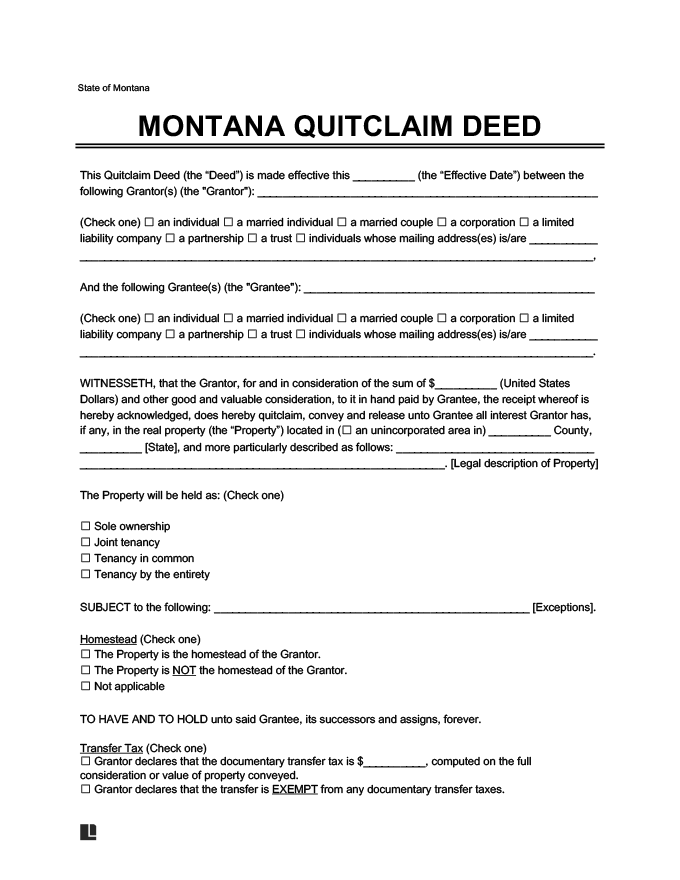There are several distinct legal requirements for filing a quitclaim deed in Montana. Making sure you are aware of those requirements can protect you and ensure the legality of the property transfer.
Specific Requirements
Mont. Code § 7-4-2636 lays out several specific requirements that recorded documents, including quitclaim deeds, must follow. These include:
- The names of the grantor and grantee on the first or second page of the document, if it contains more than one page
- A legal description of the property, including its specific location and description in county records
- All signatures, initials, dates, and handwriting in black or blue ink
- The name and address of the party to whom the document will be returned after it is filed
Failure to follow these requirements may mean that the state will not accept the document, which means that your property transfer may not be legalized.
Signing and Notarization
In order to be legal, Mont. Code § 70-21-203 notes that a quitclaim deed must be signed and dated in the presence of a notary.
Filing and Recording
In order to file a quitclaim deed, Montana Code § 70-21-208 notes that parties must take it to the County Clerk and Recorder of the county where the property is located. In addition to filing the deed, the grantee should expect to pay a filing fee.
Transfer Tax
Montana, unlike most other states, does not have a transfer tax to transfer property with a quitclaim deed.
Additional Documents
In addition to the quitclaim deed, Mont. Code § 15-7-305 notes that it is necessary to file a Realty Transfer Certificate with the County Clerk and Recorder. Parties transferring real estate who do not file this form can face fees up to $500.
Validity Requirements
In order to be considered valid, a Montana quitclaim deed needs to:
- Include all relevant information, including names and addresses of the grantor and grantee as well as a legal description of the property
- Be filled out with all handwritten information in black or blue ink
- Include a stamp and signature from a notary
- Be filed with the County Clerk and Recorder’s Office of the county where the property is located
If the document is not filled out correctly or does not contain all relevant information, the document may not be valid, which means the property transfer may not be complete.
Quitclaim Deeds vs. Other Property Transfer Methods
There are three options available for Montana residents who want to transfer a piece of property. Each one has its own advantages and disadvantages, and choosing the right one is essential to protecting the grantor and grantee in a Montana real estate transaction.
| Quitclaim Deed | Quick and simple property transfers between relatives or within interconnected entities, such as during a divorce, transferring property between parent and child, between corporations, adding a spouse to a title, or correcting a title defect, offer speed and simplicity but do not provide warranty protection for the new buyer. |
| Special Warranty Deed | Transfers property with a warranty limited to the duration the grantor owned the property, often utilized in foreclosures or bank-owned situations, provide a faster alternative to full warranty deeds. This method offers the new buyer some protection, ensuring warranty coverage exclusively for the period the previous owner held the property. |
| Warranty Deeds | Traditional property transfers used in standard sales offer more protection for new buyers through full disclosure, but may decelerate the property transfer process. |
The key difference in Montana property transfer methods is the warranty. A full warranty ensures that there are no liens or encumbrances on the property, while a special warranty clears only the time when the grantor owned the property. Without the warranty, any problems that come up after the property transfer will be the responsibility of the new owner.
